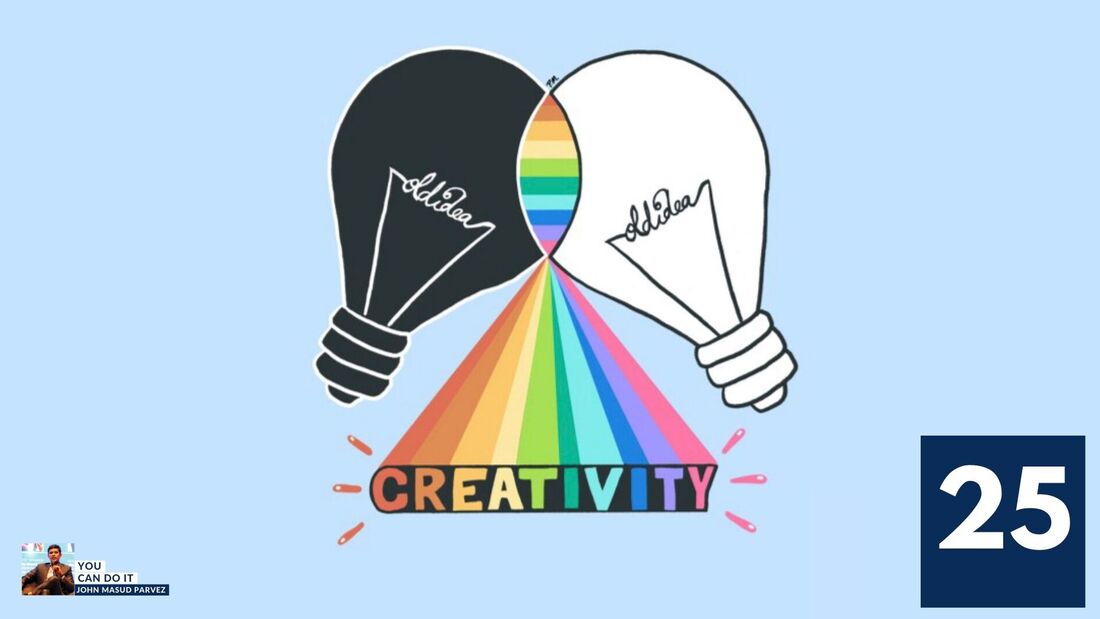|
One approach to combining ideas to unlock creativity is through synthesis and integration. This involves taking different ideas or concepts and finding connections or commonalities between them, then merging them to create something new and innovative. Here are two examples: Interdisciplinary Collaboration: Bring together individuals from different fields or disciplines to collaborate on a project. For example, a team consisting of a biologist, an architect, and a musician could collaborate to design an interactive installation that combines living organisms, structural design, and sound. By integrating their unique perspectives and expertise, they can create a novel and creative work that wouldn't have been possible without the synthesis of their ideas. Concept Mapping: Use concept mapping techniques to visually represent ideas and identify relationships between them. Start by brainstorming various ideas related to a particular problem or challenge. Then, create a visual map connecting these ideas based on similarities, patterns, or potential interactions. By examining the connections between different concepts, new insights can emerge and spark creative solutions. For example, if you are working on a project related to sustainable transportation, you could map out various ideas related to renewable energy, urban planning, and transportation systems. By visually connecting these concepts, you may uncover innovative approaches or solutions that blend these ideas together. Approach 2: Divergent Thinking and Combination Another approach to combining ideas for enhanced creativity is through divergent thinking and combination. This involves generating a wide range of ideas and then selectively combining them in unique ways to create novel solutions. Here are two examples: Random Word Association: Start by selecting two or more random words or concepts that are seemingly unrelated to the problem you're trying to solve. Then, brainstorm ideas or potential connections between these words and your challenge. For example, if you're designing a new kitchen utensil, you could combine the words "spoon" and "bicycle" to generate ideas such as a spoon with a wheel-like handle for easy stirring. By forcing unexpected connections, you can unlock creative possibilities that might not have emerged through conventional thinking. Idea Combination Exercises: Create a list of different ideas or concepts related to your problem and challenge yourself to combine them in unique ways. For instance, if you're working on a marketing campaign for a fitness product, you could combine ideas like "social media influencers," "gamification," and "interactive experiences" to develop an innovative campaign that incorporates elements of competition, social interaction, and engaging digital content. By deliberately combining unrelated ideas, you can push the boundaries of conventional thinking and unlock new creative pathways. Remember, the key to unlocking creativity through combining ideas is to embrace openness, curiosity, and a willingness to explore unconventional connections. More Help For You
Do you need help for the challenge you are facing? Put your issue, I will help you advice!
0 Comments
Leave a Reply. |
Categories
All
AuthorWe are writing to share you about all the positives we, VSHR Group is making |
We are being featured
and presented in different RENOWNED Media, Press, conferences and platforms
VSHR Office AddressHead Office: 222 Dien Bien Phu, District 3, Ho Chi Minh, Vietnam.
Leadership Hub: 155 Ben Van Don, District 4, Ho Chi Minh, Vietnam. |
|
WHAT WE BELIEVE IN
In Marvel comics super heroes come from sky. But in real life, the true super heroes/ heroines always live among us. So let's do our part and make a great positive impacts for the industry and community together."
Connect with us
Copyright © 2024, by VSHR Group



 RSS Feed
RSS Feed

